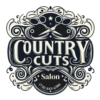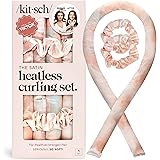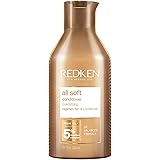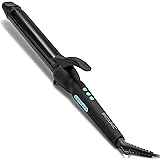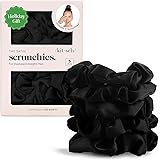Understanding Heat Damage
Heat damage refers to the negative impact that high temperatures exert on hair, significantly altering its structure and integrity. When hair is subjected to heat from styling tools like flat irons, curling wands, and blow dryers, it can lose moisture and essential nutrients, leading to an array of detrimental effects. The hair’s outer layer, known as the cuticle, is particularly susceptible to these changes, which can cause it to become weakened and more porous.
The science of hair reveals that it is primarily composed of a protein called keratin. This protein is vital for maintaining the hair’s strength and elasticity. However, exposure to excessive heat can denature keratin, leading to the breakdown of its natural structure. As a result, hair that is frequently exposed to high temperatures can develop a dry, brittle texture. This transformation often manifests as frizz, loss of shine, and an increase in split ends, which can compromise the overall appearance of one’s hairstyle.
Different heat levels can lead to varying degrees of damage. For instance, using styling tools at temperatures exceeding 350°F can accelerate the deterioration of hair quality. Prolonged exposure to heat, regardless of the temperature, further exacerbates these effects. Individuals may not notice immediate damage after a single use, but continued application over time can lead to cumulative harm.
Identifying signs of heat damage is crucial for maintaining hair health. Common indicators include a lack of moisture, excessive tangles, and visibly uneven texture. Additionally, hair may feel rough to the touch and have difficulty holding styles. Recognizing these symptoms promptly can help in taking preventive measures to protect hair from further heat-induced harm.
Why Heat Protection is Essential
Heat protection is a crucial aspect of hair care, especially for those who frequently use styling tools. Devices like blow dryers, flat irons, and curling wands generate high temperatures that can lead to significant damage if hair is not adequately protected. When hair is exposed to heat without any safeguard, it can suffer from moisture loss and structural weaknesses, resulting in dryness, brittleness, and even breakage over time.
The thermal damage inflicted by styling tools can affect all hair types, irrespective of their natural texture or thickness. Those with fine hair may notice the effects sooner, as their strands tend to be more delicate. Conversely, individuals with thicker or coarser hair may experience a gradual decline in hair health, which might go unnoticed until the damage has become substantial. Therefore, incorporating heat protection into your daily hair routine is essential for maintaining the vitality and luster of your hair.
Long-term neglect of heat protection can lead to cumulative damage that becomes increasingly challenging to reverse. Each styling session without proper care can build upon previous damage, leaving hair looking dull, lifeless, and unmanageable. Individuals may also find that they need to invest in more intensive hair treatments and products to restore their hair’s condition, which may not always be effective. This not only incurs additional costs but also involves time and effort that could be avoided with a proper heat protection strategy.
Incorporating heat-protectant products into your styling regimen acts as a barrier between your hair and the damaging effects of high temperatures. These products help retain moisture and improve the overall resilience of your hair, ensuring that styling efforts do not yield adverse effects. Hence, understanding the importance of heat protection is paramount for anyone looking to maintain healthy and stylish hair in the long run.
Choosing the Right Heat Protectant
Selecting an appropriate heat protectant is crucial for preserving hair health amidst regular heat styling. With a variety of formulations available, such as sprays, creams, and serums, understanding which type best suits your hair type and styling needs is essential. For those with fine or oily hair, lightweight sprays are often recommended, as they can shield hair without weighing it down. Conversely, thicker creams and serums tend to be more beneficial for coarser or frizz-prone hair, providing additional moisture and taming effects.
When evaluating a heat protectant, it is vital to read ingredient labels carefully. Look for key ingredients like dimethicone or cyclomethicone, which create a protective barrier around each strand and resist heat damage. Other beneficial components include natural oils, such as argan or jojoba oil, which not only protect but also nourish the hair, enhancing its overall appearance. Additionally, certain proteins found in heat protectants help to strengthen and repair hair, making them particularly effective for those with damaged or chemically treated hair.
To maximize the effectiveness of heat protectants, proper application is critical. Begin by evenly distributing the product through towel-dried or dry hair, prior to styling. It’s advisable to section the hair for more thorough coverage, ensuring that all strands are sufficiently coated. This practice not only helps in protecting the hair from heat damage during styling but also promotes a smoother and more polished final look. Moreover, allow the product to absorb into the hair for a few minutes before using any hot tools, as this time lets the ingredients form a protective layer. Choosing the right heat protectant and applying it correctly can significantly reduce the risk of heat damage, maintaining your hair’s health and vitality over time.
Best Products for Heat Protection
Protecting hair from the damaging effects of heat styling tools is essential for maintaining its health and vitality. Fortunately, there are a variety of heat protectant products available on the market tailored to different hair types and conditions. Here, we highlight some of the best options across budget ranges, ensuring that you can find something suitable for your needs.
For those with straight hair, a standout budget-friendly option is the Tresemmé Thermal Creations Heat Tamer Spray. This lightweight spray provides a protective barrier against damage from heat tools like flat irons and curling wands. Users often appreciate its non-greasy formula, which allows for easy combing without leaving residue. However, some may find it’s not moisturizing enough for excessively dry hair.
On the high-end spectrum, consider the GHD Heat Protect Spray. This premium product offers excellent thermal protection while also enhancing shine and reducing frizz. It is particularly favored for its ability to work effectively on all hair textures, although its higher price point may not be accessible for all consumers.
For wavy hair, the SheaMoisture Coconut & Hibiscus Curl & Shine Hair Mist is an excellent and affordable choice. Infused with natural ingredients, it hydrates and protects while enhancing curl definition. However, some users report that it can weigh down finer strands if applied in excess.
If your hair is curly and color-treated, the Moroccanoil Perfect Defense is a superior heat protectant. This weightless, dry aerosol spray guards against heat up to 450°F, making it ideal for blow-drying and styling without risking color fade. The downside may include its higher cost and dependency on consistent use for optimal results.
Choosing the right heat protectant is vital for maintaining the health of your hair. By considering your hair type and specific needs, you can safeguard your strands from heat damage while ensuring they remain vibrant and well-nourished.
Heat Styling Tips and Techniques
Using heat styling tools can enhance your hair’s appearance, but it is essential to employ strategies that minimize the risk of heat-induced damage. One of the primary considerations is selecting the appropriate temperature setting according to your hair type. For fine or damaged hair, it is advisable to set the temperature between 250°F to 300°F, whereas medium to thick hair can tolerate temperatures ranging from 300°F to 400°F. Using the lowest effective temperature is crucial for achieving a desired style without compromising hair health.
In addition to adjusting temperatures, employing proper styling techniques can significantly impact the health of your hair. For instance, when using flat irons or curling wands, it is beneficial to work in small sections. This allows for a more even distribution of heat, reducing the likelihood of overheating particular strands. It is also recommended to use the heat tool in a gliding motion rather than pressing down hard, as excessive pressure can contribute to breakage.
Moreover, allowing hair to air dry before using heat tools should not be overlooked. Doing so helps to remove excess moisture and minimizes the heating time, which subsequently lessens the risk of damage. If you are in a hurry, consider using a blow dryer with a nozzle attachment set to low heat, ensuring that you keep the dryer moving to avoid concentrating heat on one area.
For those looking to reduce their reliance on heat styling, there are numerous techniques available. Braiding damp hair can create effortless waves without any thermal application, while using rollers can provide volume and curl without introducing heat. Additionally, techniques such as twisting sections or pin curling can help achieve desired styles while keeping your hair healthy.
Healthy Hair Practices Beyond Heat Protection
While using heat protectants is crucial for safeguarding your hair from heat damage, there are several additional practices that can significantly contribute to overall hair health. One of the fundamental practices is establishing proper washing techniques. It is advisable to use a gentle, sulfate-free shampoo to avoid stripping natural oils from the hair. Washing hair with lukewarm water helps in maintaining moisture, while rinsing with cold water can seal the cuticle, promoting shine and smoothness.
Conditioning is another essential aspect of a healthy hair care regimen. A good quality conditioner should be applied after shampooing to replenish moisture and provide necessary nutrients. Deep conditioning treatments, ideally performed once a week, can enhance hydration and repair damage, thereby fortifying the hair’s structure. With various options available, it is important to select products that cater to your specific hair type and needs.
Regular trims are also vital for maintaining healthy hair. Eliminating split ends prevents further hair damage and aids in achieving a polished appearance. It is generally recommended to schedule a trim every six to eight weeks, depending on hair growth and individual circumstances.
Incorporating hydration into your routine transcends beyond topical applications. Drinking adequate water daily ensures that your hair remains hydrated from within. Additionally, maintaining a balanced diet plays a significant role in promoting healthy hair growth. Consuming essential nutrients, such as proteins, vitamins, and minerals found in foods like fruits, vegetables, whole grains, and lean meats, is paramount. Omega-3 fatty acids, found in fish and flaxseeds, also contribute to scalp health.
By embracing these healthy hair practices in conjunction with using heat protectants, individuals can significantly enhance the strength and resilience of their hair, minimizing the risk of heat damage over time.
Common Myths about Hair and Heat Damage
In the realm of hair care, various myths exist regarding heat damage and the use of styling tools. One prevalent misconception is that heat protectants are optional; however, studies indicate that these products are essential in minimizing damage from heat exposure. Heat protectants create a barrier that helps retain moisture and prevent direct damage to the hair shaft. Neglecting to use these products can lead to increased breakage and dryness, ultimately undermining the integrity of your hair.
Another common myth pertains to the frequency of hair washing. Many individuals believe that washing their hair daily contributes to damage. While over-washing can strip the hair of natural oils, leading to dryness, the actual frequency of washing should depend on individual hair type and the use of heat styling tools. Oily hair may require more frequent washing, whereas dry or curly hair may thrive with less frequent cleansing, provided proper moisture is maintained. The key is to listen to your hair’s needs rather than adhering to a stringent washing routine.
Additionally, there is a belief that some styling tools cause less damage than others. For instance, while it’s often thought that using a blow dryer is less harmful than a flat iron, the truth lies in the temperature settings used on these tools. High temperatures can damage hair regardless of the device employed. To reduce the risk of heat damage, it is advisable to use tools with adjustable heat settings and keep the temperature as low as possible while still achieving the desired style. Understanding these distinctions is vital for maintaining healthy hair while embracing styling methods.
Long-Term Care for Heat-Damaged Hair
Hair that has suffered from heat damage requires a dedicated and nurturing approach to rehabilitate it effectively. The key to restoring the health and vitality of your locks lies in establishing a comprehensive hair care routine that prioritizes repair and nourishment. One of the most beneficial treatments for heat-damaged hair is deep conditioning. Incorporating a high-quality deep conditioner into your weekly regimen can significantly enhance moisture retention, thus promoting strength and elasticity.
In addition to deep conditioning, regular use of hair masks can provide much-needed hydration and nutrients. These masks can be enriched with natural oils, proteins, and vitamins that are essential for healing damaged strands. Opting for products specifically formulated for damaged hair can accelerate the restoration process; however, homemade masks using ingredients such as avocado, honey, and coconut oil can also be highly effective.
Moreover, it is imperative to avoid any shocking treatments, such as drastic hair color changes or significant haircut alterations, during the recovery phase. Such practices can further stress already weakened hair. Instead, gradual changes and gentle styling methods will help the hair to regain its strength without additional trauma.
Patience and consistency are paramount when rehabilitating heat-damaged hair. Treatment results may not be immediate, and lasting recovery may take several weeks or even months, depending on the extent of the damage. It is crucial to stay committed to your hair care routine while regularly monitoring progress. If you find that your efforts are not yielding satisfactory results, seeking professional assistance from a certified hair care specialist can provide you with tailored strategies aimed at restoring your hair’s health.
Reader Tips and Personal Experiences
Engaging in a community dialogue can offer invaluable insights into effective heat protection strategies for hair health. Readers are encouraged to share their personal tips and experiences with various methods and products that have proven beneficial in safeguarding their hair from heat damage. Such exchanges not only foster a sense of camaraderie among individuals facing similar hair care challenges but also help in discovering diverse solutions that may be tailored to different hair types and textures.
One effective way for readers to contribute is by detailing their experiences with specific heat protectant products. For example, some individuals find that serums or sprays specifically designed to shield hair from heat enhance their styling outcomes. Others might prefer natural alternatives, such as oils that not only protect against high temperatures but also nourish the hair. By sharing these recommendations, readers can aid their peers in making informed choices that could lead to healthier hair.
Anecdotes regarding techniques can also enrich this conversation. Readers might describe how they adapt their styling routines to minimize damage—using lower heat settings, incorporating air-drying, or utilizing protective styles that keep hair secure while using heated tools. This collective wisdom can highlight the importance of a personalized approach when it comes to hair care, as what works for one person may yield different results for another.
Encouraging testimonials about various brands or specific products can lead to fruitful discussions within the community. It is critical for everyone to feel free to express their suggestions and experiences, thereby creating a space that promotes inclusiveness and open-mindedness. Ultimately, the objective is to contribute to a growing repository of knowledge on effectively protecting hair from heat damage, which can be beneficial for all members of the community.
